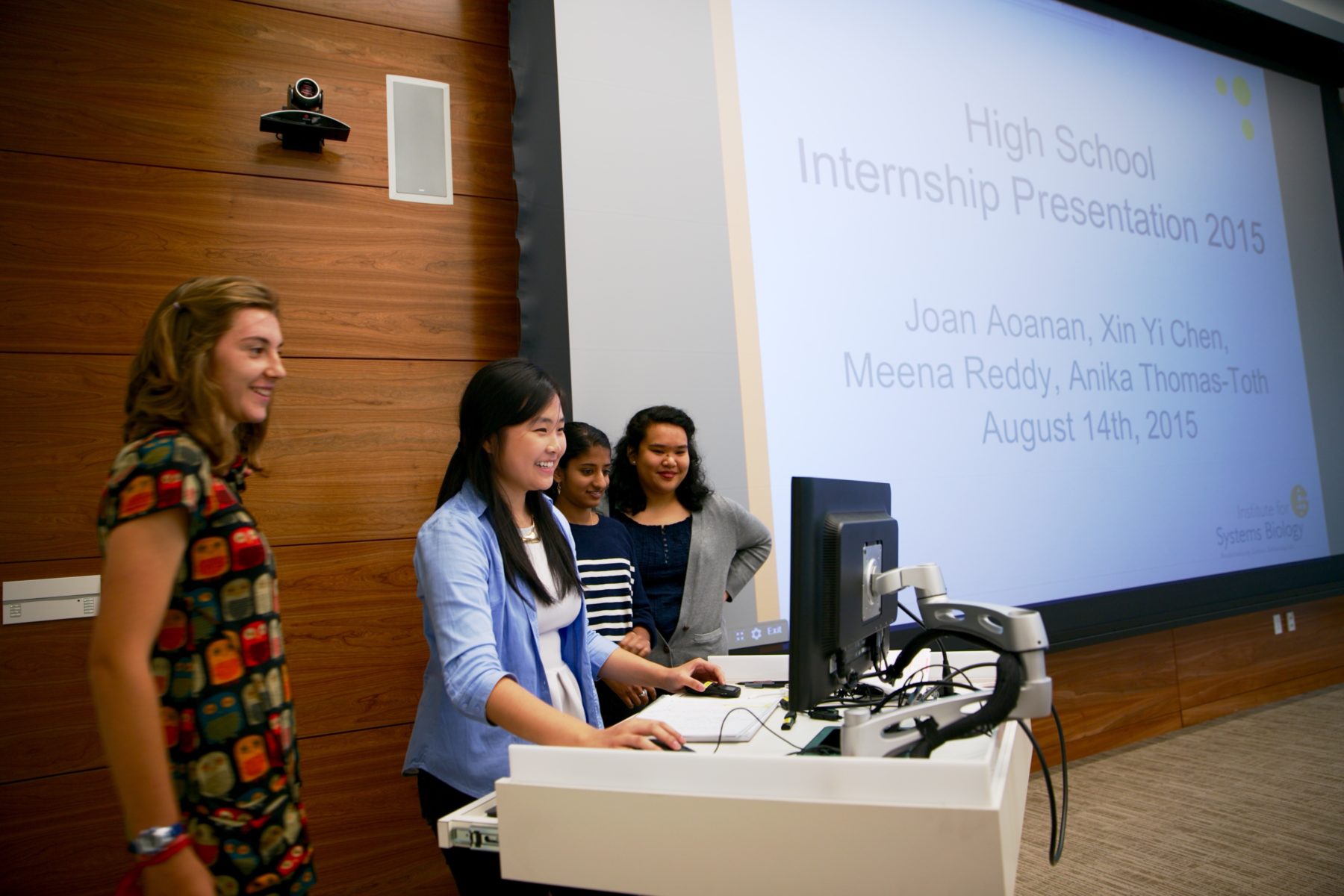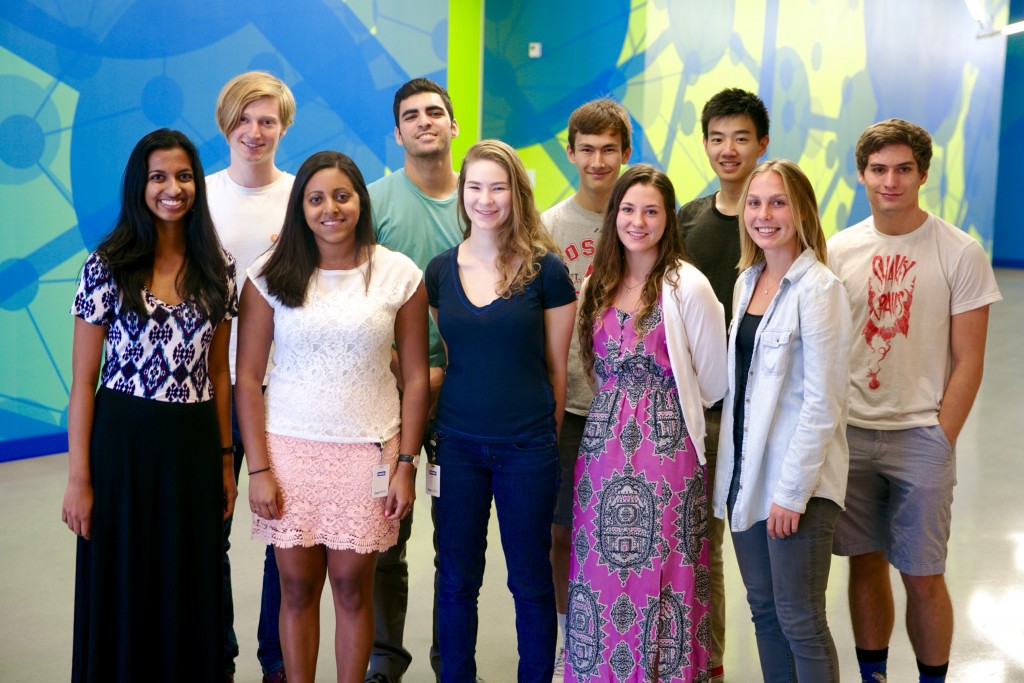ISB’s Summer Interns Brightest of the Bright
 isbscience.org/news/2015/08/25/isbs-summer-interns-brightest-of-the-bright/
isbscience.org/news/2015/08/25/isbs-summer-interns-brightest-of-the-bright/
Photo above: ISB’s high school interns presented their research.
Every summer, ISB and ISB’s Center for Systems Biology welcome undergraduate and high school students for internships in our labs. Each student is paired with a mentor and works on research actually taking place in the respective lab. The internships are extremely competitive and we see some of the brightest young minds from across the country.

Bijou Basu, from Washington University in St. Louis, presented her research poster in a rare opportunity to meet with ISB President Dr. Lee Hood.
Read about their experiences at their group web sites:
Undergraduate interns site
High school interns site
Learn more about ISB’s internship programs






